By Esha Chaudhuri
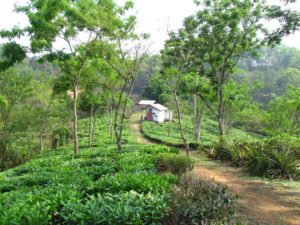 Tea, a beverage has earned its reputation as one that is healing and energizing, whether to usher in the day or rejuvenate. As many would contend, Meghalaya is a non-traditional tea growing state; but some of the most successful entrepreneurial green ventures are those belonging to the tea fraternity locally and have earned a name of repute, creating waves in the country and globally too. Bringing these success stories from the Khasi and Garo Hills of the State, Sunday Shillong interacts with some of them on World Tea Day to delve deeper into their setups, understanding the market and the evolution of tea among traditional the ‘red tea’, ‘sha’ and ‘chai’ drinkers.
Tea, a beverage has earned its reputation as one that is healing and energizing, whether to usher in the day or rejuvenate. As many would contend, Meghalaya is a non-traditional tea growing state; but some of the most successful entrepreneurial green ventures are those belonging to the tea fraternity locally and have earned a name of repute, creating waves in the country and globally too. Bringing these success stories from the Khasi and Garo Hills of the State, Sunday Shillong interacts with some of them on World Tea Day to delve deeper into their setups, understanding the market and the evolution of tea among traditional the ‘red tea’, ‘sha’ and ‘chai’ drinkers.
From our own
Starting from scratch on trial and error basis to now having an end-to-end expanse, tea in Meghalaya is a perfect example of an experiment gone right.
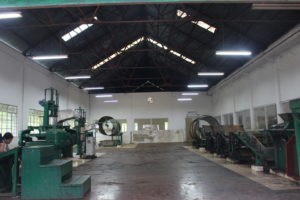 As Maqbool L Suiam, Special Officer on Duty, Meg Tea Upper Shillong, says, “It was initially started in the 1970s with a few farmers experimenting and encouraged by its growth and suitability in the prevailing soil and climatic conditions, the state government subsequently adopted a policy to incentivize commercial cultivation of tea in private farmers’ fields.”
As Maqbool L Suiam, Special Officer on Duty, Meg Tea Upper Shillong, says, “It was initially started in the 1970s with a few farmers experimenting and encouraged by its growth and suitability in the prevailing soil and climatic conditions, the state government subsequently adopted a policy to incentivize commercial cultivation of tea in private farmers’ fields.”
Like Meg Tea, other tea companies such as Andersons, Denmar, Arsla, Urlong, and Arengh Tea have seen similar journeys as collectives of small tea growers or learning the skills from a family run initiative that later grew into a registered cooperative with efforts towards building an organically certified processing unit/factory of its own. While some grow the traditional Assam tea, others have ventured into the white, green, oolong and Darjeeling variants.
Based on the expanse of the industry in the present day, Suiam says, “Tea plantation in the state has grown by leaps and bounds, wherein; in terms of the statistics the total acreage now, has increased to more than 2000 hectares with over 1500 small growers and some private gardens now produce CTC (Cut, Tear and Curl) teas in which tea drinkers can add sugar, milk or even some spices, and Orthodox Varieties of tea of good quality.”
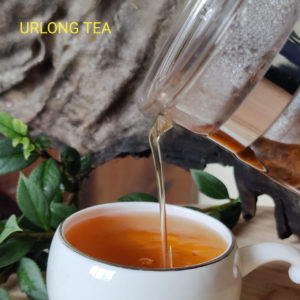 “The initiative began with a plot of land at Rongram, Allagre area of Garo Hills because there were no factories in the nearby areas to process the tea and the growers were adopting the traditional method of making tea, alongside which, unprocessed excess tea leaves were being thrown in the Rongram river” describes, Godfrey N Arengh, Proprietor of Arengh Tea, in a transformational approach.
“The initiative began with a plot of land at Rongram, Allagre area of Garo Hills because there were no factories in the nearby areas to process the tea and the growers were adopting the traditional method of making tea, alongside which, unprocessed excess tea leaves were being thrown in the Rongram river” describes, Godfrey N Arengh, Proprietor of Arengh Tea, in a transformational approach.
Having carved their individual journeys, some have had a crusading one of socio-economic development at a village level. Narrating the story of her own enterprise Urlong tea, whose name in the Khasi language means, “dream come true”, Ribahun Umsong, Manager at Urlong Tea, says, “At a time, the village in Mawlyngot was infamous for alcoholism where both men and women were involved in producing a brand of local rice and millet liquor known as ‘Pyrsi‘, later witnessed an overhaul under the leadership of D.L. Nongspung, founder of the tea estate, consolidating the village into better living.”
Coffee versus Tea
Partaking in one of the oldest ‘us versus them’ debates, Sunday Shillong probed its interviewees into the uptake of coffee and if there’s been a marked shift from tea to coffee.
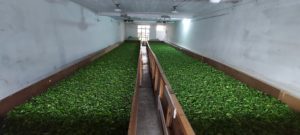 Breaking it down to choices within categories, Marbah Warjri, Proprietor at Denmar Tea explains, “Tea is still the most widely consumed beverage after water, but the transition is visible in the black tea sector, as coffee is considered a substitute for black tea, but green tea has emerged as a popular beverage across regions and age groups, owing to its health benefits.”
Breaking it down to choices within categories, Marbah Warjri, Proprietor at Denmar Tea explains, “Tea is still the most widely consumed beverage after water, but the transition is visible in the black tea sector, as coffee is considered a substitute for black tea, but green tea has emerged as a popular beverage across regions and age groups, owing to its health benefits.”
Citing a reference from a survey on coffee drinkers swaying towards tea, Warjri propounds, “According to a survey, even regular coffee drinkers reveal that they have at least one cup of tea per day”
Witnessing no visible transition, Almeric Anderson Sohkhlet, Managing Director at Andersons Tea states, “As majority of us still love chai, we haven’t yet faced any drastic effects of the shift from tea to coffee and this is because tea is a health drink rich in antioxidants and low caffeine levels.”
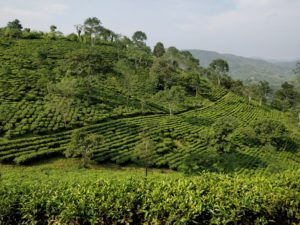 While there’s no doubt that there has been a surge in the consumption of high quality coffee at the corporate level, yet for the average Indian, the first beverage that comes to mind is ‘Chai’, a culture that is almost irreplaceable by a nation of over a billion”, states, Umsong, unmoved by the rapid growth of the coffee sector.
While there’s no doubt that there has been a surge in the consumption of high quality coffee at the corporate level, yet for the average Indian, the first beverage that comes to mind is ‘Chai’, a culture that is almost irreplaceable by a nation of over a billion”, states, Umsong, unmoved by the rapid growth of the coffee sector.
In a similar tone, Arengh states, “The Northeastern region grows high quality teas which makes it unique; and tea, will continue to remain the common man’s favourite beverage and most demanded product.”
Bringing out a class factor in the choice, Thomas Roy Mallai, Chairperson of Arsla Tea, Ri Bhoi, says “the choice between coffee and tea is about economic variables, especially in the present times. Tea is cheaper and easily available, while coffee is comparatively more expensive”
Tying it all together, Suiam expands, “Both tea and coffee are popular beverages and have their unique places and one does not need to oust the other.”
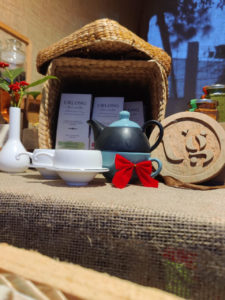 Building his case from the marketing point of view, Suiam adds, “Yes, marketing of coffee has helped boost its growth of coffee but tea has not been left behind; as where there is a Cafe Coffee Day and Starbucks, we now have Chaayos and Chai Point, alongside, where one grows at a faster pace than the other.
Building his case from the marketing point of view, Suiam adds, “Yes, marketing of coffee has helped boost its growth of coffee but tea has not been left behind; as where there is a Cafe Coffee Day and Starbucks, we now have Chaayos and Chai Point, alongside, where one grows at a faster pace than the other.
Tea in the age of social media
Marketing of any product/produce has seen a paradigm shift with the game-changing role of social media and online marketing forums, especially more so with the rise of the ‘influencer culture’. Commenting on this, Sohkhlet concurs, “Even though most of our tea is sold locally and in tea auctions, we handle an Instagram account, wherein some potential buyers connect with us for our contact details.” Elaborating from an instance on the influence of social media, Sohkhlet narrates, “A YouTube filmmaker, also an engineer at our tea estate has documented the many of the works carried out in our tea garden, and that got us great publicity and buyers too.”
Trusting the traditional means of transaction, Warjri affirms, “Almost 95% of our tea is sold to bulk buyers, and therefore there hasn’t been a need to use any form of brand promotion or advertising as such.”
“However, as we have long term plans of increasing our retail business, we are considering marketing through social media, digital influencers, as well as audio and visual media” adds, Warjri.
 Catering to a niche clientele, Mallai says, “Arsla tea is yet to sell its produce through online/digital marketing and till date we have not had any sort of promotion on social media either. We are solely reliant on the local market and the Guwahati Tea Auction Centre.”
Catering to a niche clientele, Mallai says, “Arsla tea is yet to sell its produce through online/digital marketing and till date we have not had any sort of promotion on social media either. We are solely reliant on the local market and the Guwahati Tea Auction Centre.”
Not depending on any such marketing strategy, Suiam says, “We haven’t had the need to use such marketing tools as we do not have the quantity, and deal with buyers who require less convincing as they appreciate the high quality (taste and fragrance) of our tea, which are largely based on interactions. “
Future of tea
The question beckons, what is the future of the beverage that lights up a dull day, and one which is a go-to drink for most, if not all?
Mallai answers, “The prospect of Meghalaya’s tea aspirations are high as long as this labour intensive industry receives more aid from the government, the young lend a hand to collectively make it cost effective.”
Drawing attention to its conducive climatic conditions, Warjri says, “Meghalaya is blessed with suitable natural conditions for the cultivation and production of high quality tea, especially organic practices, since a large part of Meghalaya is still virgin land and unpopulated by conventional fertilizers with the potential of putting it on the map like that of Assam and Darjeeling.”
Seconding this, Sohkhlet states, “The future of tea in Meghalaya is bright because our buyers are not just local but from other states and countries, who find the best of both worlds CTC and Specialty teas, due to the elevation of our lands in between Darjeeling and Assam”
As an example of being a messiah for the marginalized, Arengh suggests, “Just like the Arengh Tea industry has been helping the people to earn their livelihoods and providing employment, I hope that other such cooperatives come up in the near future that will cater to the needs of the local people and tastebuds of society as a whole.”
“Despite the challenges in the market none of our local brands comprise on quality; which make tea stakeholders the main players in the overall tea scenario in the state and further encourage small tea growers to emulate such success stories for long term economic sustainability” says Suiam, concluding it with a factual perspective.
While black coffee has witnessed a large uptake especially with a spiraling boost in cafe culture but there has been no concrete evidence to suggest a sliding effect on the tea business. With all odds pointing towards tea, evidently, the debate stands moot. Tea wins!



